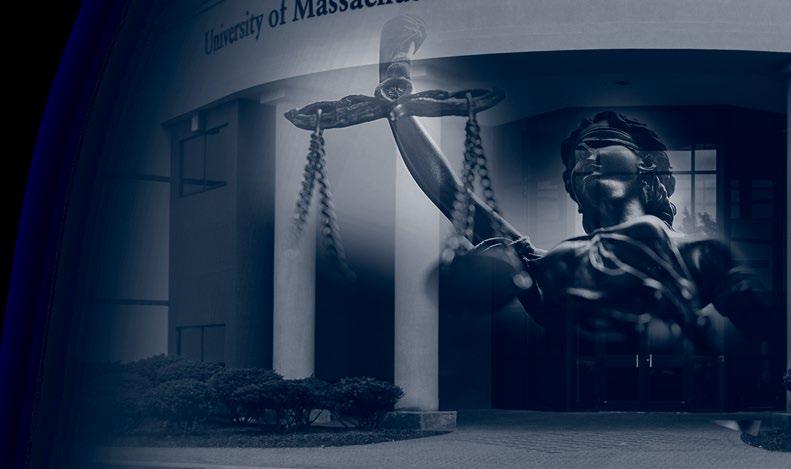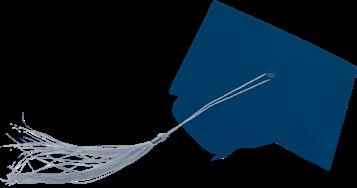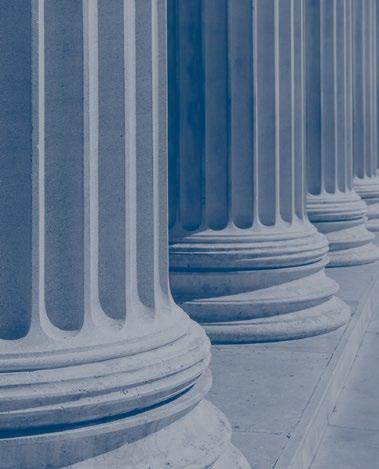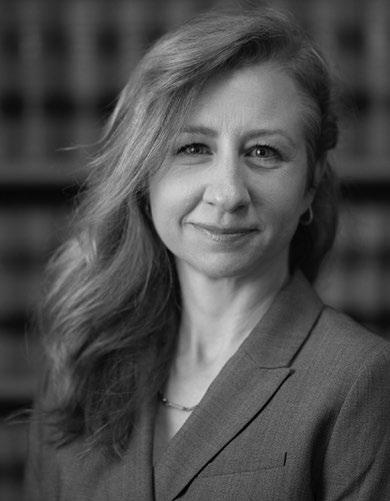UMass Law Ceremony


Friday, May 12, 2023



123rd
Commencement CXXIII
UMass Dartmouth School of Law
UMass Dartmouth Mission
UMass Dartmouth distinguishes itself as a vibrant, public research university dedicated to engaged learning and innovative research resulting in personal and lifelong student success. The University serves as an intellectual catalyst for economic, social, and cultural transformation on a global, national, and regional scale.
UMass Dartmouth Vision
UMass Dartmouth will be a globally recognized premier research university committed to inclusion, access, advancement of knowledge, student success, and community enrichment.
School of Law Mission
UMass Law is the Commonwealth’s public law school. We are committed to providing an excellent, affordable, and accessible legal education. Our collegial community respects and promotes diversity in identity and ideas. Our program balances legal theory, doctrine, skills, experience, and professionalism. We strive to graduate competent, ethical, and creative professionals who exercise sound judgment. Our involvement in the legal community enables our students to thrive in a changing profession and to serve the needs of their future clients. We advance justice within and beyond the Commonwealth through our research, writing, teaching, learning, practice, and engagement with the profession.
Board of Trustees
Stephen R. Karam, Chairman
Mary L. Burns, Vice Chair ’84, Lowell
Bethany C. Berry
David M. Brunelle
Gerald G. Colella ’78, Lowell
Jose M. Delgado ’18, Amherst
Michael E. Dooley
Robert Epstein ’67, Amherst
Richard M. Kelleher ’73, Amherst
Mina T. Lam
Adam M. Lechowicz ’22, Amherst
Robert Lewis, Jr.
Ann M. Maguire Keches ’73, Amherst
Michael V. O’Brien ’88, Amherst
Noreen C. Okwara, M.D. ’12, Boston; ’17, Chan Medical School
Imari K. Paris Jeffries, BA, MEd, MA ’97, ’99, ’03, Boston
Julie M. Ramos Gagliardi, MBA ’87, Dartmouth
Elizabeth D. Scheibel, JD ’99, Boston
Steven A. Tolman
Patrick Tutwiler, PhD
Maxwell D. White ’23
Charles F. Wu, MBA
Land Acknowledgement Statement
UMass Dartmouth acknowledges the land that we occupy and on which we sit today as the traditional and ancestral home of the Wampanoag tribes, including: the Mashpee, Nauset, Nantucket, Pennacook, Pokanoket, Pocasset, Seaconke, and other indigenous nations of Southeast Massachusetts. Without them, we would not have access to this gathering and to this dialogue. We take this opportunity to thank and honor the original caretakers of this land.
The permanent record kept in the Office of the University Registrar for each student will certify the award of degree and carry their grades, averages, and honors (if any). At commencement, students graduating with distinction are noted only if that distinction has been earned at the end of the previous semester.
The names appearing in the Commencement Program represent an unofficial listing of candidates.
The University of Massachusetts is committed to a policy of equal opportunity without regard to race, color, religion, gender, gender identity or expression, age, sexual orientation, national origin, ancestry, disability, military status, or genetic information in employment, admission to, and participation in academic programs, activities, and services, and the selection of vendors who provide services or products to the University.
2
History of the University
The University of Massachusetts Dartmouth traces its roots to 1895 when the state Legislature chartered the New Bedford Textile School and the Bradford Durfee Textile School in Fall River.
As the region’s economic base shifted from textiles to more diverse manufacturing and service industries, the colleges adapted by diversifying their curricula to respond to the needs of new generations of students. By the middle of the 20th century, the colleges grew rapidly, spurred by the GI Bill and the emerging economic and social advantages of a well-educated citizenry. They evolved into multipurpose institutions that prepared engineers, health care workers, teachers, and business leaders.
In 1962, the Legislature created Southeastern Massachusetts Technological Institute (SMTI) by merging the New Bedford Textile School and the Bradford Durfee Textile School, the first in a series of mergers and acquisitions that form the current day University of Massachusetts Dartmouth. The 710-acre campus in Dartmouth, located between the urban centers of New Bedford and Fall River, was created in 1964. The dramatic campus design was the work of renowned architect Paul Rudolph, then Dean of the Yale University School of Art and Architecture.
The public demand for a comprehensive university provided the momentum in 1969 to transform SMTI into Southeastern Massachusetts University. The University continued to grow through the 1970s when its first residence halls were opened and through the 1980s as research and studio facilities were added. In 1988, the Dion Science and Engineering Building opened, as well as the Cedar Dell Townhouse Complex.
Also in 1988, the Swain School of Design in New Bedford merged with the University’s College of Visual and Performing Arts, strengthening programs in art and artisanry. The Swain merger added downtown New Bedford art facilities to the University.
In 1991, Southeastern Massachusetts University and the University of Lowell joined the University of Massachusetts, which already had campuses in Amherst, Boston, and Worcester. Thus, Southeastern Massachusetts University became the University of Massachusetts Dartmouth.
In 1994, UMass Dartmouth received approval to offer its first Ph.D. in Electrical Engineering. In 1997, construction was completed on the School for Marine Science and Technology, located on 2.6 acres in New Bedford, near Buzzards Bay.
In 2001, the University opened the College of Visual and Performing Arts’ Star Store facility in downtown New Bedford, a structure transformed from a landmark department store into a vibrant arts center located in the city’s historic district. That same year, the University opened the Advanced Technology and Manufacturing Center in Fall River. The 60,000 square foot research center and business incubator facility, now called the Center for Innovation and Entrepreneurship (CIE), currently houses a major pharmaceutical firm, 20 start-up technology companies, prototype shops, conference space and laboratories. Several companies have graduated from the CIE, creating jobs in the region.
In 2002, the University began a major expansion of student housing, growing to 4,500 beds in 2005. This made the University a predominantly residential campus. In 2004, the University opened a new Charlton College
3
of Business building, and recently added a Charlton Learning Pavilion wing. In 2007, the University opened a 22,000 square foot research building, focusing on interdisciplinary science initiatives.
In 2010, the University opened its School of Law, the only public law school in Massachusetts. The school has since earned national American Bar Association accreditation. A major renovation and expansion of the 160,000 square foot Claire T. Carney Library was completed in 2013. The project more than doubled the use of the library by students and won numerous architecture awards for bringing a modern approach to Rudolph’s vision.
Throughout its history, the University has been a national leader in civic engagement, and in 2013 earned a national top 20 ranking among nearly 800 institutions ranked by the Corporation for National Community Service.
In 2016, the University achieved formal doctoral institution status when the Carnegie Classification of Institutions of Higher Education designated the university as a “Doctoral University–Higher Research Activity.” The University remains the only
Massachusetts research university located south of Boston.
In 2018, the University broke ground on a housing and dining complex designed to transform the student living and learning experience on campus. The 1,200-bed housing complex is also home to technology-equipped maker spaces where students collaborate on group projects, soundproof music practice spaces, and two computer learning commons. Attached to the Balsam and Spruce Halls is the 800-seat dining facility called The Grove. This marketplace concept expanded food options in response to students’ needs and expectations. The complex was opened to students in the fall of 2020.
In recognition of the University’s mission fulfillment, U.S. News & World Report ranked the University #69 in the nation, #2 in Massachusetts, and #3 in New England on their 2023 Top Performers on Social Mobility list. The ranking analyzes institutions that are more successful than others at advancing social mobility by enrolling and graduating large proportions of low-income students awarded Pell Grants.
4
Academic Regalia
The University of Massachusetts Dartmouth and other contemporary institutions of higher learning evolved historically from the great medieval universities in Europe such as those in Bologna, founded in 1088, Oxford in 1167, and Cambridge in 1209.
Originally, the university was a guild of Masters of Arts, and the degree was the token that full membership had been attained. Even as, after “serving his time,” an apprentice was licensed to practice his trade or “master,” so the Master of Arts was certified by his superiors and admitted to the practice of instruction and, therefore, the ceremony marking the occasion was known as “Commencement.”
The term “Bachelor” originally designated a man who was assistant to a small landowner and in medieval times denoted the apprentice as opposed to the master workman. It is uncertain when the title of “Doctor” was established as a degree superior to that of “Master,” but at Bologna it was conferred in Law in the 12th century, and Paris awarded the degree in Divinity about the same time. There is mention of the “Doctors of the different Faculties” at Oxford in 1184, so that the term was evidently used as a title for those possessing the highest degree of learning soon after the establishment of the first universities.
At that time, everyone–men and women, royalty and commoners–wore gowns; that is, long, full-flowing robes, and the king himself decreed what quality apparel might be worn by whom. After about 1600 they were rarely worn by men other than legal and official personages.
The hood first appeared as a separate article of attire in the 13th century, but by 1600 it, like the gown, ceased to be worn at all except by legal, official, academic, and clerical personages.
During the early years of the medieval universities, scholars wore the same general type of clothing as everyone else: gowns, cloaks with hoods attached, or separate hoods and caps. After a while, details of scholars’ apparel were prescribed by university statutes to distinguish the faculties as well as the different degrees of learning. When the fashions of the people changed, scholars kept
the original styles both because they were prescribed by university statutes and “because it is honourable and in accordance with reason that clerks to whom God has given an advantage over the lay folk in their adornments within, should likewise differ from the lay folk outwardly in dress.”
In today’s academic procession, the regalia not only contribute pageantry and color, but denote the academic status of their wearers. The cap, or mortarboard, is worn by all academics upon occasion; but only those who hold an academic degree wear the tassel to their left, and only those who hold the Doctor’s degree are permitted tassels of gold.
Gowns are of three basic patterns: (a) the Bachelor’s gown, of unadorned black and with long pointed sleeves; (b) the Master’s gown, unadorned black but with an oblong sleeve, open at the wrist, square cut with an arc cut away; and (c) the Doctor’s gown, velvet-faced, with bell-shaped sleeves and bars of velvet on each sleeve.
Hoods are of two shapes and lengths, also corresponding to the degree held by the wearer. Their binding or trim is colored to indicate the department or faculty to which the degree pertains, while the lining is decorated in the colors and arrangement characteristic of the institution which awarded the degree.
It should be noted that some institutions depart to a lesser or greater degree from these general rules in the design and execution of their academic regalia.
Hood Colors Fields
White Humanities, Liberal Arts
Orange Engineering
Apricot Nursing
Gold Sciences
Peacock Blue Public Policy
Light Blue Education
Dark Blue
PhD Degrees –all fields
Light Brown Business
Brown Art
Purple Law
5
The Chancellor’s Chain of Office
The Mace
The Chancellor’s Chain of Office, designed and created by College of Visual and Performing Arts faculty, reflects the rich history of the University of Massachusetts Dartmouth as well as the current array of its diverse Schools and Colleges. Visually inspired by campus architect Paul Rudolph’s original vision, the Chain of Office incorporates modern contemporary lines echoing the University’s commitment to the future.
The official University seal, the seals of the University’s predecessor institutions, and emblems of the eight existing Schools and Colleges are represented in the medals comprising the chain, which was created of cast bronze and plated in 24-karat gold.
Professors Alan Burton Thompson and Susan Hamlet of the Artisanry Department combined cutting edge computer technology and the oldest of technologies, the hand, to create the chain, which was constructed of more than 60 individual pieces. Full-time Lecturer Charlotte Hamlin of the Textile Design/Fiber Arts program fashioned the blue velvet backing. Full-time Lecturer Reuben Foat of Artisanry’s Furniture Design program assisted in the production process.
The 3-D design software and printer used to create the chain was recently purchased for the College and is now being used to teach digital fabrication classes to undergraduate and graduate students.
The mace, once a terrible instrument of medieval close combat, has come to symbolize the power and authority of an appointed or anointed leader. Many universities, eager to engage in the medieval pageantry reflecting the origins of our earliest universities, have adapted the mace as a ceremonial staff borne at the head of processions traditionally marking the beginning of convocation and commencement.
The University of Massachusetts Dartmouth Mace, created by Richard Creighton, Professor of Fine Arts, is the gift of the late Vice Chancellor for Student Services Emeritus, Celestino Macedo, and the late Special Assistant to the President, Norman Zalkind LHD ’81.
6
Order of Exercises
Academic Procession
The audience is requested to remain seated until after the processional has been completed.
National Anthem
Kianna Wilson ’24
Welcome
Mark A. Fuller, PhD
Chancellor
Greetings from the Law School
Eric J. Mitnick, JD, PhD Dean
Greetings from the Board of Trustees Mary L. Burns
Greetings from the Alumni Association
Castell Abner, Jr., JD ’97
President
Student Address
Natalie Peters ’23
A nnouncement of Awards
Eric J. Mitnick, JD, PhD
Hooding of the Candidates and Conferring of Juris Doctor Degrees
Mark A. Fuller, PhD
Hanchen Huang, PhD
Eric J. Mitnick, JD, PhD
Recessional
Student Awards
Academic Achievement Awards
F ull-time student:
Jennifer A. White
Part-time student:
M ichael P. Masci
Clinical Legal Education Award (CLEA)
E mily Lenore Dillan
External Legal Education Award (CLEA)
C hristopher M. Jones
Connecticut Attorneys Title Insurance Company (CATIC) Foundation, Inc. Award
C atherine N. Summa
Dean’s Service Award
E mily Lenore Dillan
Pro Bono Award
Reid McKinney
686 hours of pro bono work
St. Thomas More Award
John Patrick Ortolano
Student Bar Association
Hon. Francis L. Larkin Amicus Award
A melia Rose DeMelo
Thurgood Marshall Social Justice Award
Ina D. Chang Torres
7
Law Student Speaker
Natalie M. Peters

Natalie M. Peters is from West Barnstable, Massachusetts. At UMass Law she has served as Lead Editor of UMass Law Review, as Treasurer of the Federalist Society during her first year in law school, and as President during her second and third years. She was awarded a 2022 Civic Action Program Fellowship where she engaged with lawmakers and policymakers to learn different approaches to impacting public policy.
Born and raised in Southern Illinois, Natalie has a B.S. in Dietetics from Southern Illinois University. Before law school, she was a nutritionist for Baltimore City’s WIC program and has edited books on investment strategies and on the history of currency and banking. She has also managed a social media campaign for a judicial candidate and marketing for a biotech startup. But by far her most important, most challenging, and most rewarding job has been raising four incredible children. She is unspeakably proud of them.
Her husband, William, is a saint who supported and encouraged her, believing in her abilities even when she did not. Her husband and children endured many sacrifices and dinnerless nights so that Natalie could pursue her Juris Doctor. She is eternally thankful to them for their love and support, along with her parents, Hon. James and Cynthia Moore. After law school, Natalie will clerk for Justice Robinson at the Rhode Island Supreme Court.
8
2023 School of Law
Eric J. Mitnick, JD, PhD Dean
Juris Doctor Recipients
Sydney C. Abbott*
Yessenia I. Acosta Terrazas
Anda Vanessa Alexandru
Nicholas R. Arnett
Andrew Elie Ashkar
Amelia W. Ashworth
Alessandro M. Balbo Forero
Vincent F. Bernardo
Philip R. Bio
Madison Lynn Boudreau
Garrison Milton Bourbonniere
James H. Brady
Justine E. Brower
Colin Patrick Burke*
Elizabeth Ann Cabral-Townson**
Pricilla K. Cadet
Shane E. Callahan
Peter M. Capalbo
Ina D. Chang Torres
Raisa Choudhury
Emma E. Clune*
Antonio L. Cortes
Thomas M. Cosentino
Nicholaus Kurtis D’Agostino*
Janay Ebony Shakira Davidson
Amelia Rose DeMelo
Alexander N. Demou
Emily Lenore Dillan***
Samantha R. Downing
Aaron D. Druyvestein
Augustus James Duncan**
Morgan N. Dunham
Nicole L. Egan**
Michelle Lee Fotev
Danielle Rose Gilbert***
Samantha M. Glatz
Alexander N. Golding
Lillie Sara Goldman**
Tory A. Gonsalves
Stefanie Grimando
Austin A. Gutierrez
Kylie N. Hammonds
Christopher T. Hampton
Nicholas R. Hansen
Heidi Leila Hautala**
Cayla Colby Cassidy Hixon
Brittany T. Holland
Amanda Danielle Iocono**
Shelby M. Jimcosky
Mitchell Dee Johnson
Christopher M. Jones
Jason M. Jones
Kira L. Judd
Maryna Khomenko
Rachel M. Kilgallen
Keila Ann Kistler
Anastasia Kondrasov
Cassandra Margaret Langtry (posthumously)
Bonnie Lee
Linda Letourneau
Philip C. Light
Hannah Elizabeth Abbot Look*
Alex S. Luckoo
Michael P. Masci***
Mason T. Mathieu
Kajahna C. Matos
Nana Asumeng Crystal McBrown
Katherine McCormick
Alexandra E. McCumiskey
Elle F. McDermott
Reid McKinney
Elise Mercer
Snejana Mitrov
Norbert H. Mongeon**
Christopher P. Murphy
Nicholas P. Nachtergaele
Mai-Anh K Nguyen
Apphia Candace Nurse
John Patrick Ortolano
Danielle Christina Owens
Madeline Paquette**
Alyssa Katherine Parker-Szabo
James Emmanuel Bernard Péan
Edward J. Pesare
Natalie Peters**
Kaitlyn Marie Pichardo
Heather Lynn Pina
Andie Fu Yi Si Plumeri
Samantha B. Rapping
Marikate E Reese*
Ilena Reynoso Arellano
Thomas J. Rizzo**
Stephanie Sabino
Ashley G. Sanchez*
Megan N. Schoonmaker
Alisa Scivetti
David Ryan Shepherd
Navjot S. Sidhu
Andrew David Silva**
Brittany M. Sousa
Alejandra Louisa Patton Spruill
James B. Stark
Cierra D. Storbeck*
Catherine N. Summa**
Christopher Thrasher
Emily Tumber***
Chad J. Tworek
Viktor Amir Noël Grimm Vilt
Jennifer M. Walker
Matthew David Walker
Cailey A. Watson
Jennifer A. White***
Sarah Courtney White
Nathaniel B. Wiley
Riana Yaman
Honors designations - pending final grades
*** Summa Cum Laude
** Magna Cum Laude
* Cum Laude
9
2023 Recognition
Academic Fellows
Elizabeth Ann Cabral-Townson
Emily Lenore Dillan
Lillie Sara Goldman
Shelby M. Jimcosky
Anastasia Kondrasov
Cierra D. Storbeck
Catherine N. Summa
Jennifer A. White
Delta Theta Phi Law Fraternity Award
Garrison Milton Bourbonniere
Samantha M. Glatz
Public Interest Law Fellows
Yessenia I. Acosta Terrazas
Amelia W. Ashworth
Garrison Milton Bourbonniere
Peter M. Capalbo
Emma E. Clune
Janay Ebony Shakira Davidson
Amelia Rose DeMelo
Alexander N. Demou
Emily Lenore Dillan
Michelle Lee Fotev
Cayla Colby Cassidy Hixon
Amanda Danielle Iocono
Rachel M. Kilgallen
Kajahna C. Matos
Reid McKinney
Apphia Candace Nurse
Ilena Reynoso Arellano
Jennifer A. White
Nathaniel B. Wiley
Law Review Board
E ditor-In-Chief
Jennifer A. White
Ma naging Editors
Em ily Lenore Dillan
Lillie Sara Goldman
Catherine N. Summa
Executive Articles Editor
And rew David Silva
Bu siness Editor
Colin Patrick Burke
Notes Editor
Am anda Danielle Iocono
Technology Editor
Nicole L. Egan
Lead Editors
Da nielle Rose Gilbert
Nat alie Peters
Em ily Tumber
Staff Editors
Augustus James Duncan
Alexander N. Golding
Madeline Paquette
Thomas J. Rizzo
“Servant of Justice Award” for performing 100 hours of pro bono or community service
Pricilla K. Cadet
Ina D. Chang Torres
Alexander N. Demou
Aaron D. Druyvestein Morgan
N. Dunham
Kylie N. Hammonds Danielle
Christina Owens
Alyssa Katherine Parker-Szabo
Stephanie Sabino
Andrew David Silva
Brittany M. Sousa
Viktor Amir Noël Grimm Vilt
Sarah Courtney White
“Leader for Justice Award” for performing 200 hours of pro bono or community service
Sydney C. Abbott
Yessenia I. Acosta Terrazas
Amelia W. Ashworth
Garrison Milton Bourbonniere
Peter M. Capalbo
Emma E. Clune
Janay Ebony Shakira Davidson
Amelia Rose DeMelo
Emily Lenore Dillan
Michelle Lee Fotev
Lillie Sara Goldman
Cayla Colby Cassidy Hixon
Amanda Danielle Iocono
Mitchell Dee Johnson
Rachel M. Kilgallen
Maryna Khomenko
Philip C. Light
Kajahna C. Matos
Katherine McCormick
Reid McKinney
Apphia Candace Nurse
Marikate E. Reese
Ilena Reynoso Arellano
Jennifer A. White
Nathaniel B. Wiley
Faculty and Staff Marshals
Chief Marshal
Professor Phillip E. Cleary, JD
Faculty Marshal
Professor Dwight G. Duncan, JD
Staff Marshals
Julie Cahill, JD
Sandra Leger Silva
10
Congratulations from the UMass Law Alumni Association!
As you determine where the next steps lead you—whether you remain in the SouthCoast, relocate for your dream job, or take some time to decide—a network of supportive UMass Dartmouth Law alumni are here to support you. There are many ways for you to be an engaged UMass Dartmouth Law alum starting today!
Stay connected to UMass Law through the Corsair Network
Sign up for the Corsair Network, where you can maintain and build connections with UMass Dartmouth Law alumni eager to mentor you as you begin your careers. Tap into a powerful network and valuable resources exclusive to the UMass Dartmouth Law alumni community. Update your contact info here at corsairnetwork.com
You’re invited to join the entire UMass Dartmouth community back on campus for Blue & Gold Weekend, October 20-21!

11
333 Faunce Corner Road
Dartmouth, MA 02747-1252
umassd.edu/law/alumni








